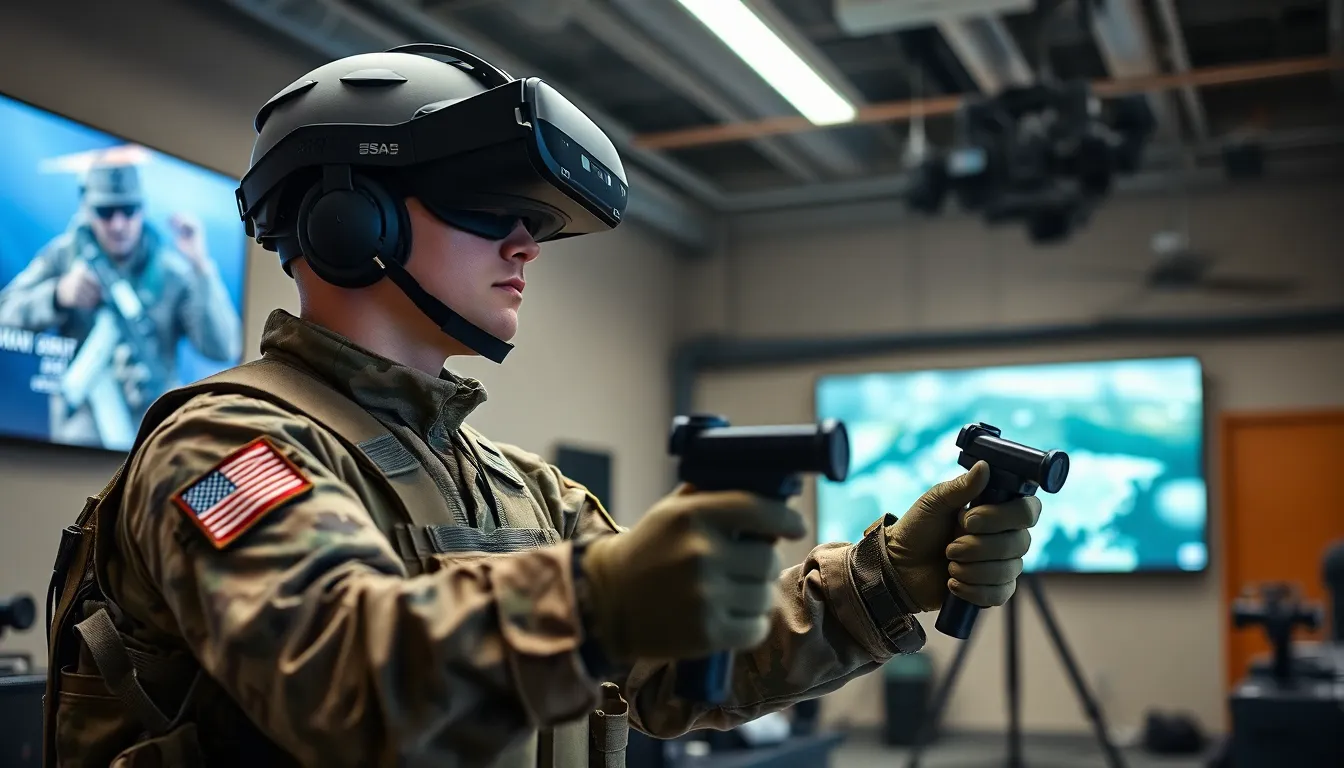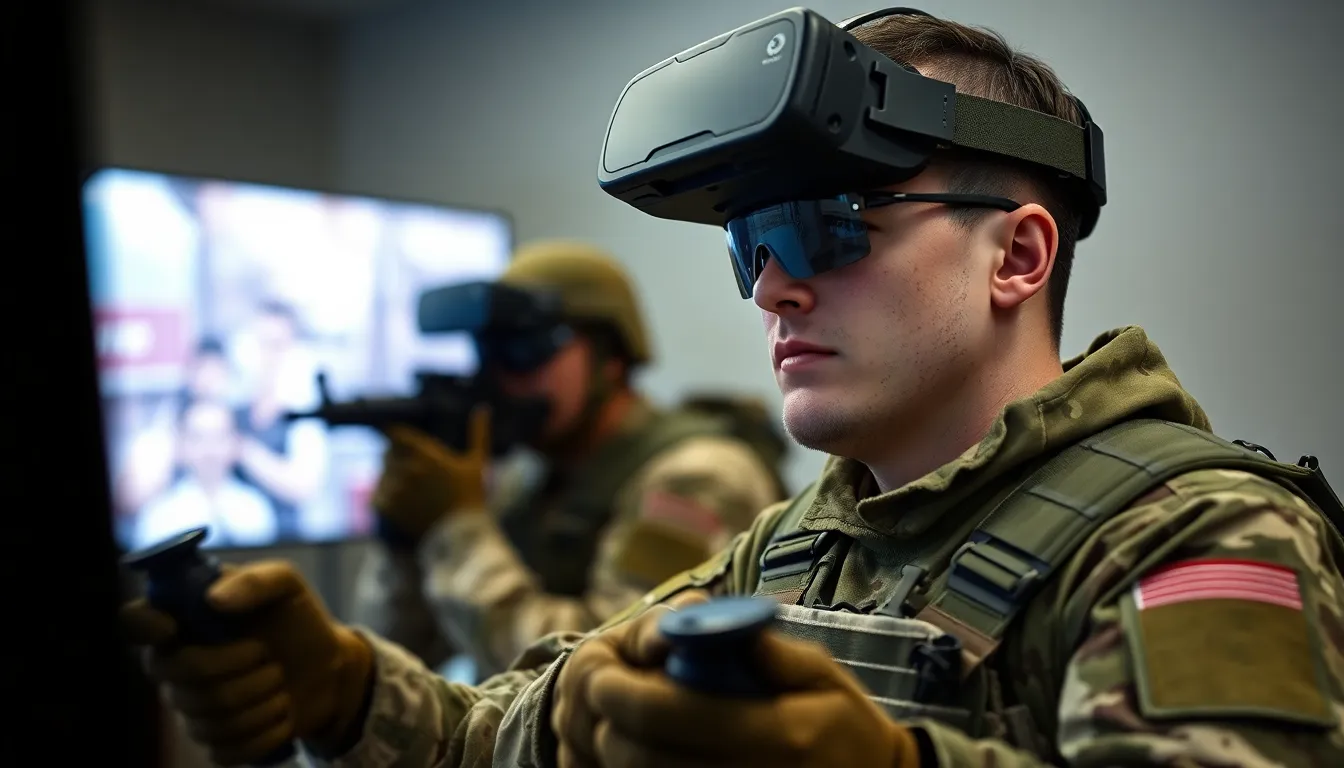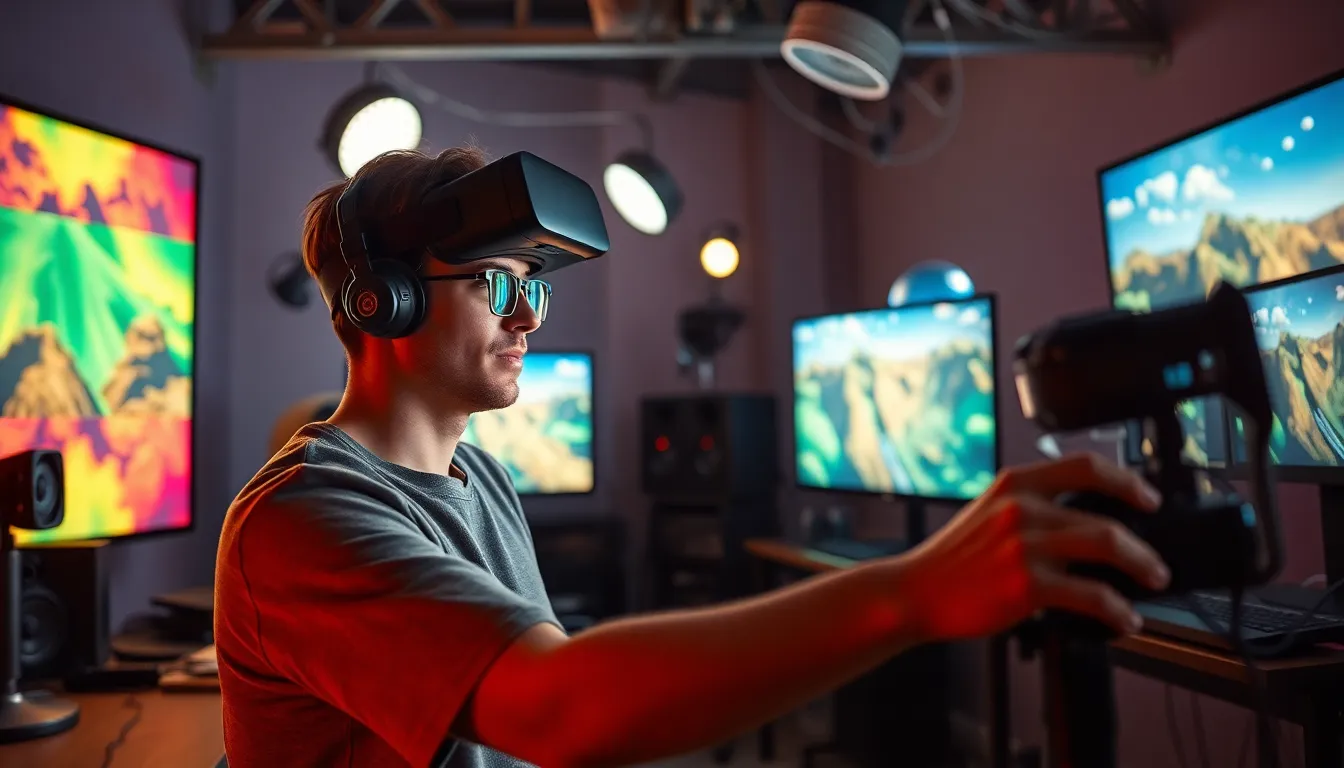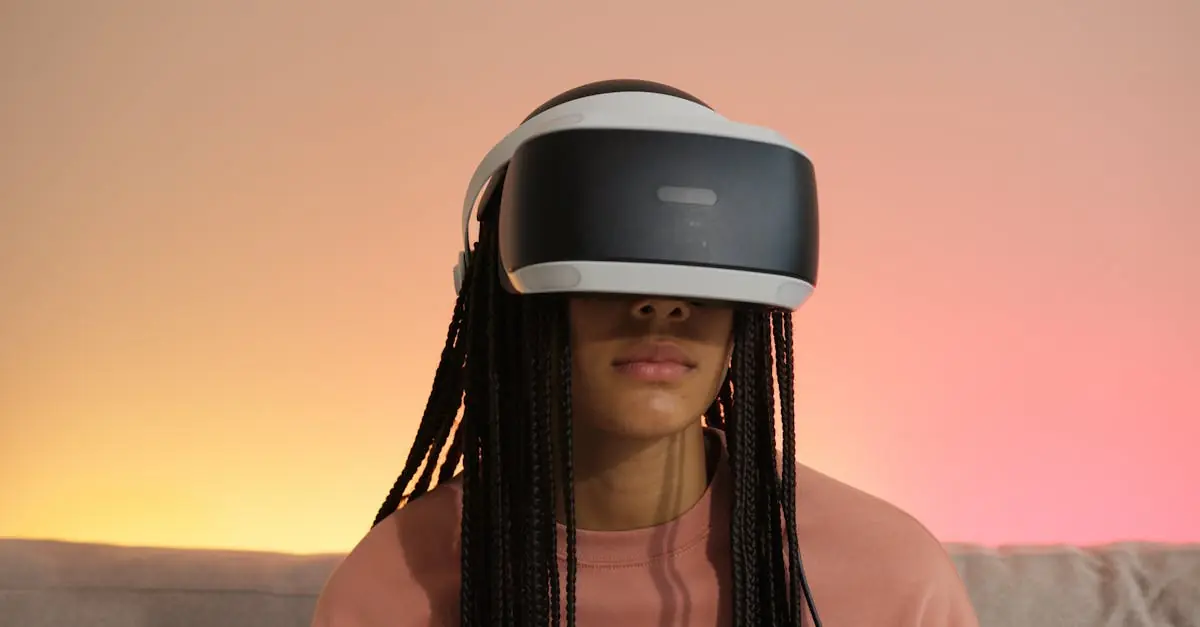In a world where video games reign supreme, the military has found a secret weapon: virtual reality. Forget dusty old training manuals and boring lectures. VR military simulations are revolutionizing how soldiers prepare for the battlefield, turning training into an immersive experience that’s as thrilling as it is effective. Who wouldn’t want to dodge enemy fire while wearing a headset and sipping coffee?
These high-tech simulations allow troops to face real-life scenarios without the risk of actual danger. They can practice everything from combat tactics to teamwork, all while feeling like they’re starring in their own action movie. With VR, soldiers can train smarter, not harder, and maybe even have a little fun along the way. Buckle up as we dive into the fascinating world of VR military simulations and discover how they’re shaping the future of defense training.
Table of Contents
ToggleOverview of VR Military Simulations
VR military simulations utilize immersive technology to transform training procedures. Military personnel participate in detailed virtual environments, facilitating realistic scenarios that mirror real-world combat conditions. These platforms enhance skills in strategic thinking, decision-making, and teamwork.
Combat scenarios vary widely, encompassing everything from small-unit tactics to complex joint operations. Training can be tailored to individual needs, including specific mission types and operational environments. This customization allows soldiers to prepare for diverse situations they may face on the battlefield.
Realistic simulations afford soldiers the opportunity to practice in a safe setting. Failure during training doesn’t result in injury but rather offers vital lessons without real-world consequences. Such an approach fosters confidence and builds competence.
User feedback consistently highlights the significant engagement levels associated with VR training. Participants report increased motivation and retention of information when training occurs in immersive scenarios. This shift from passive learning to active participation leads to better overall outcomes.
Integration of VR in military training extends beyond just combat simulations. It includes logistical planning and emergency response exercises. By utilizing advanced technologies, armed forces can quickly adapt their training regimens to better prepare for future challenges.
An impressive array of companies and defense departments are developing and adopting these VR systems, showcasing the growing importance of this training method in modern military operations. These innovations shape how soldiers approach training and prepare for the complexities of warfare in the 21st century.
Benefits of VR Military Simulations

VR military simulations offer numerous advantages, enhancing training and operational readiness in various ways.
Enhanced Training Efficiency
Training in VR significantly reduces time spent on skill development. It allows soldiers to practice multiple scenarios in a fraction of the time traditional methods require. Immersive experiences increase retention rates, so soldiers understand tactical concepts better. Continuous assessment in VR environments provides instant feedback, facilitating quicker learning. Balanced between engaging content and realistic challenges, these simulations maintain high levels of motivation. Soldiers can engage in repeated drills without resource constraints, fostering proficiency over time.
Improved Decision-Making Skills
Decision-making skills improve through exposure to high-stakes scenarios in VR. Participants face dilemmas that require quick thinking and strategic planning, reflecting real-life situations. Options presented in the simulations encourage critical analysis of various outcomes. The immediacy of feedback helps reinforce effective tactics while addressing poor choices. Enhanced collaboration with team members mimics actual combat dynamics, promoting cohesive unit operation under pressure. Realistic environments cultivate adaptive thinking, preparing soldiers for uncertainty and complexity in real-world situations.
Types of VR Military Simulations
Various types of VR military simulations enhance training across multiple domains. Each simulation type addresses specific skills soldiers need for modern warfare.
Tactical Training Simulations
Tactical training simulations immerse soldiers in realistic combat scenarios. They replicate environments that soldiers might encounter in actual missions. These simulations focus on developing skills in decision-making, teamwork, and resource management. Participants navigate complex situations that demand quick thinking and strategic planning. Feedback during these trainings is immediate, allowing soldiers to adjust tactics in real time. Studies show that engaging in tactical simulations leads to improved mission performance in real-life situations.
Flight Simulators
Flight simulators create detailed and realistic experiences for pilots and crew members. They replicate flying conditions, including adverse weather and emergency scenarios. Through these simulations, pilots practice skills crucial for safe flight operations. Real-time data from the simulations allows for targeted evaluations of pilot performance. The immersive environment cultivates confidence and enhances situational awareness. Incorporating flight simulators into training regimens helps prepare military personnel for demanding aerial missions, improving overall readiness.
Challenges in Implementing VR Military Simulations
Various challenges arise when implementing VR military simulations. Understanding these challenges is crucial for effective integration into training programs.
Cost and Resource Allocation
Significant financial investments are tied to the development and maintenance of VR training platforms. Expenses include software development, hardware procurement, and ongoing technical support. Many military organizations face budget constraints, making it difficult to allocate adequate resources for VR technology. Prioritization of funding often leans towards traditional training methods, hindering the shift to immersive solutions. Leaders must balance immediate training needs against long-term benefits of VR, which might limit widespread adoption.
Technological Limitations
Several technological limitations affect the effectiveness of VR military simulations. Current systems often require high-performance computers and specialized equipment, which may not be readily available across all military units. Additionally, issues like latency and motion sickness can hinder user experience, reducing the impact of training. Software interoperability also presents challenges as various systems may not communicate effectively with each other, complicating integration efforts. Continuous advancements in technology are essential to address these limitations and enhance the training effectiveness of VR systems.
Future of VR Military Simulations
Advancements in VR technology will redefine military simulations. Emerging technologies such as artificial intelligence and machine learning can enhance realism, tailoring scenarios to individual soldiers. Increased responsiveness from simulations allows for adaptive training environments that evolve based on performance, ensuring continuous improvement.
Improved data analytics will support real-time performance assessments, offering insights into strengths and weaknesses. Integration with other training systems creates a comprehensive approach to military readiness, merging VR with live training exercises. Cost reductions from advancements in hardware could make these technologies more accessible to diverse military branches.
Expansion potential exists in collaborative training, where multiple units interact within the same virtual environment. This fosters teamwork and communication across different military divisions, enhancing operational effectiveness. Future VR simulations may also emphasize psychological resilience, preparing soldiers for stress management in high-pressure situations.
Utilization of VR in logistics and strategy planning will grow, allowing forces to visualize supply chains and mission sets in a controlled environment. Enhanced scenario generation will provide varied experiences that prepare soldiers for unknown factors during real missions. The evolution of networking capabilities ensures that soldiers can connect in immersive environments, regardless of geographical barriers.
Growing interest from private sectors will likely lead to innovative partnerships, driving further development in VR military applications. With new products emerging, benefits such as increased retention of strategies and enhanced tactical skills become evident. Staying ahead of technological advancements is crucial for military forces aiming to maintain operational superiority.
As these changes unfold, military leaders must address challenges, such as technological integration and training costs, to harness the full potential of VR simulations. Success in overcoming these hurdles positions military forces to leverage VR effectively in future conflicts and operational scenarios.
The integration of VR military simulations represents a significant leap forward in training methodologies. By offering immersive experiences that closely mimic real combat scenarios, these simulations enhance soldiers’ tactical skills and decision-making abilities.
As technology continues to advance, the potential for VR in military applications will only grow. Addressing the challenges of cost and technological integration will be crucial for military leaders seeking to maximize the benefits of VR training.
Ultimately, embracing VR technology will not only improve training efficiency but also prepare armed forces for the complexities of modern warfare. The future of military training is here, and it promises to reshape how soldiers are prepared for the challenges ahead.



